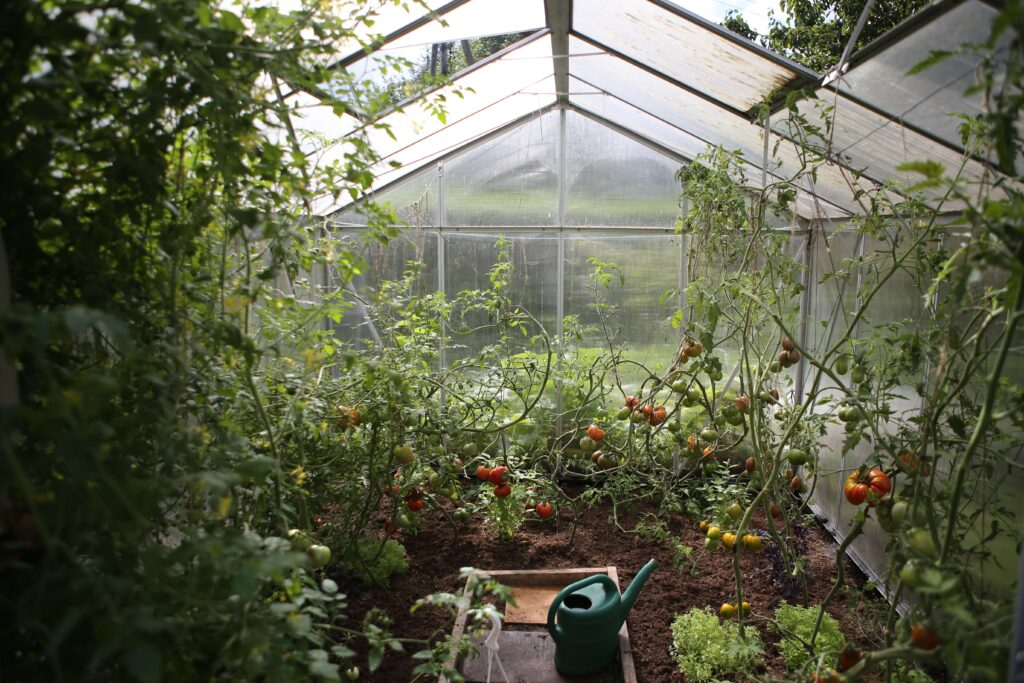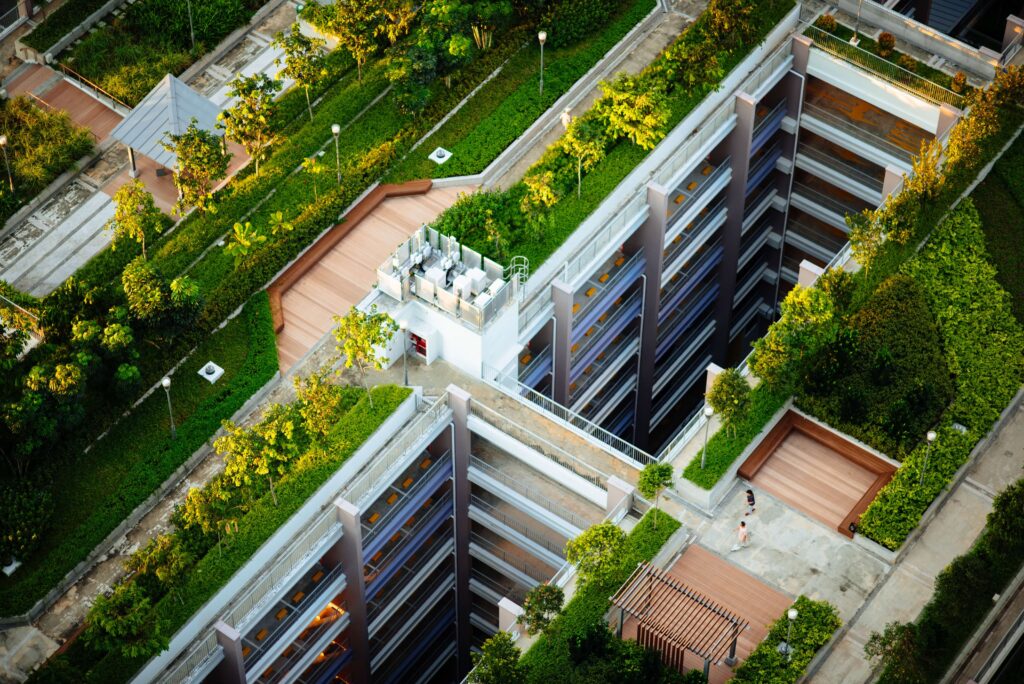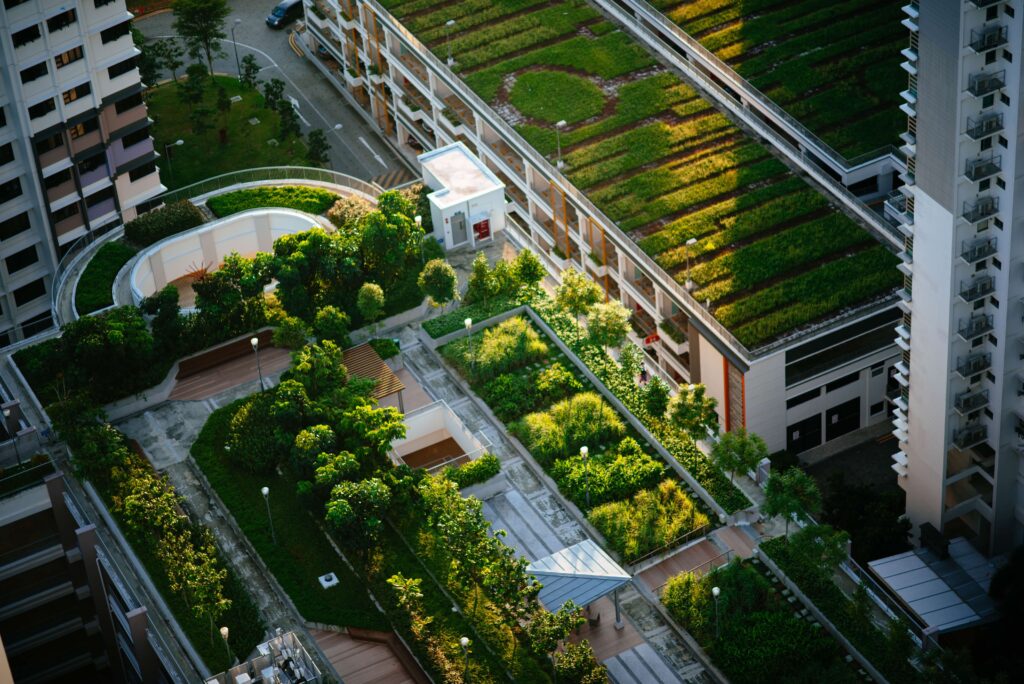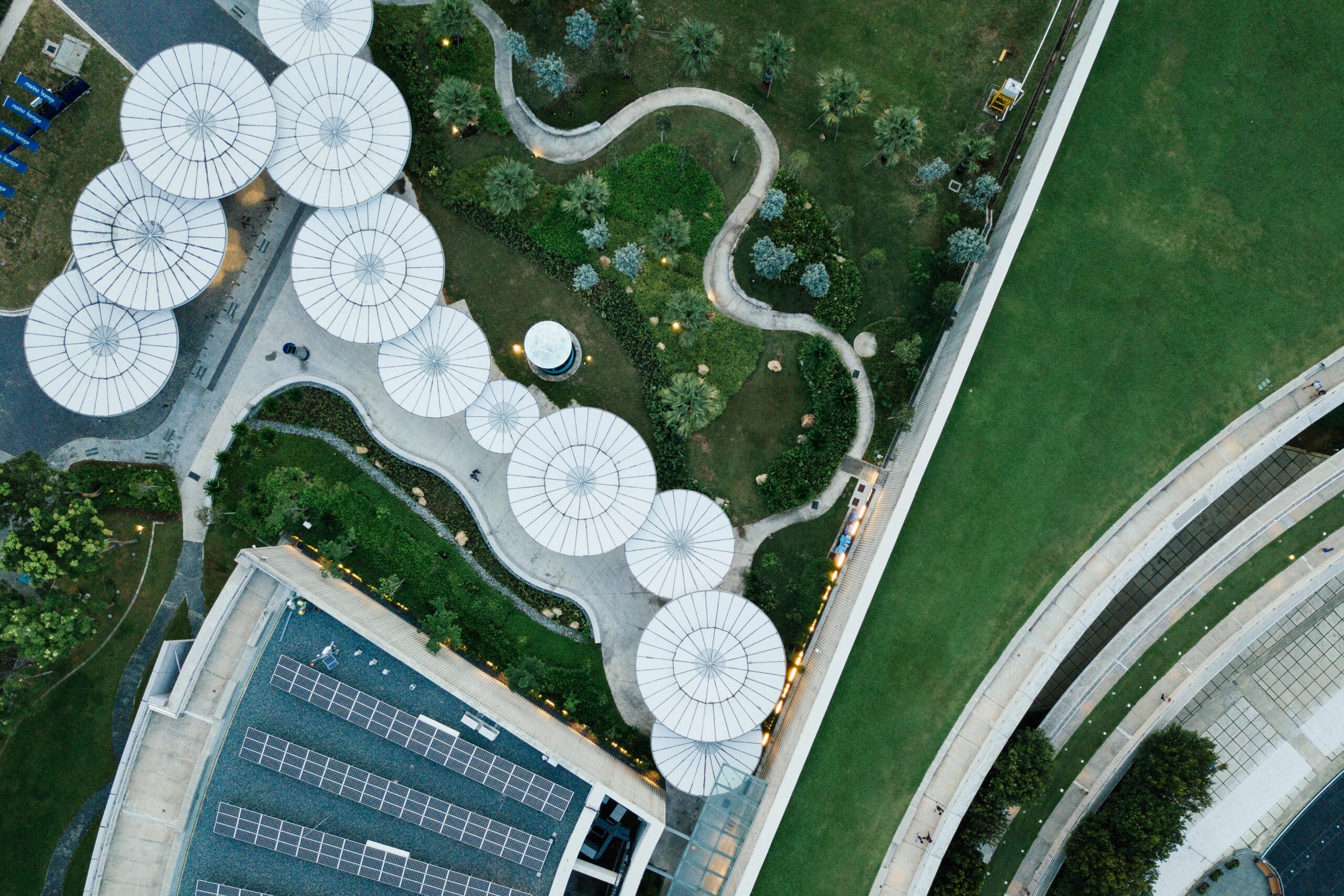A green roof is a beautiful way to add more greenery and wildlife to a constricted space. Whether it’s a garage or shed, or you’re going big and want a rooftop garden, a green roof will quickly become a stand-out feature in your home.
In this guide, we’ll show you how to build a green roof step-by-step. From the necessary materials to the installation process and budget, you’ll get everything you need to build the green roof of your dreams.
Table of Contents

How to Build a Green Roof in 5 Steps
To build a green roof, it all comes down to planning. First, you need to prepare the roof by ensuring it has adequate waterproofing, root barriers, and drainage. Then, you’ll need the growing medium or substrate layer, which should be lightweight, low in nutrients, and allow for sufficient drainage. Finally, add vegetation to the roof, starting with plug plants from a local grower. Space them out properly to ensure good coverage.
If you’re planning on DYing it, here’s a quick step-by-step guide to show you how to build a green roof.
Step #1: Prepare the roof
When designing your green roof, you need to think about the elements of your existing roof structure:
- The pitch of the roof
- Structural loading
- Waterproofing of the roof
- Water retention to support the vegetation
- Water drainage for excess water
Make sure you have adequate waterproofing layers, drainage, and structural loading to support your new roof garden.
The depth of your green roof will vary depending on the type you choose. Go for a thinner option if you’re worried about the strength of your current roof:
- Extensive = 80 – 150mm
- Semi-extensive = 100 – 200 mm
- Intensive = 300mm+
The more you have planned out in advance, the easier the installation process will be.
Step #2: Install the waterproof membrane
You’ll need a monolithic waterproof membrane made of rubber or plastic to secure to the top of your roof. You might find that your roof already has a waterproof membrane made from bitumen, asphalt, or liquid waterproofing, but we still recommend adding a second membrane to protect the structure.
Step #3: Add drainage and filter layers
On top of the waterproof membrane goes a drainage filter layer. Green roof drainage is usually an HDPE membrane that has cavities or cups to collect water. These little reservoirs hold onto rainwater until it’s drawn back up by the vegetation.
Excess water will then drain through the HDPR membrane and travel down to drainage spaces (usually your gutters) to be evacuated.
Step #4: Choose and add vegetation
Sedum is a great choice for extensive green roofs because it can tolerate varying weather conditions and establishes quickly. You can pick up cheap pre-grown sedum mats that are ready to install, giving you instant greenery.
If you want something a little more varied, mosses, grasses, and wildflowers do well on green roofs.
You can plant a variety of plants on a green roof. Grasses, mosses, and sedum are common for extensive green roofs. Certain types of wildflowers are a nice option for attracting wildlife. Some popular choices are Rudbeckia, Achillea, Potentilla, and Armeria. But you should aim for native plants to help them withstand your local climate.
Step #5: Keep the moisture in
On top of the soil or growing medium, add a thin layer of mulch around the plants to lock in moisture and provide the necessary nutrients for your new roof plants to thrive. If you live in a drought-prone area, this is an especially important step.
Benefits of Having a Green Roof
Green roofs don’t just look incredible; they come with some great benefits backed up by impressive stats.
Stormwater Management
A green roof can help reduce the stormwater runoff rate from a roof by up to 65%. In urban areas where most surfaces are paved with concrete, stormwater can’t get reabsorbed into the ground, resulting in excess runoff to drains.
A green roof delays that runoff rate by up to three hours, helping avoid flooding and pollutants being swept into water systems.
Energy Conservation
Green roofs also reduce energy consumption by cooling the roofs and providing shade, thermal mass, and insulation. Some research shows that daily energy demand can decrease by as much as 75% with the installation of a green roof.
Biodiversity and Habitat
For animal and plant lovers, green roofs help attract wildlife and increase biodiversity. Once established, you’ll quickly see birds, bees, spiders, and insects using your green roof.
Urban Heat Islands
Cities are usually warmer than other less populated areas since concrete and asphalt absorb solar radiation. This leads to higher energy consumption, air pollution, and even heat-related deaths.
Green roofs help tackle urban heat islands by making surfaces 30-40% cooler and reducing heat flux from roof to building by up to 72%.
Roof Longevity
Many people believe that green roofs deteriorate more quickly than conventional roofs, but they actually last about twice as long. Not only will your roof look stunning, but it will last for 40 years or more with proper maintenance.
3 Types of Green Roofs

You’ve got endless options when it comes to the design of your green roof, but there are three categories to consider:
- Extensive green roofs
- Semi-intensive green roofs
- Intensive green roofs
The real difference between the three is the depth of the material placed on the roof, but let’s look at each one in more detail.
1. Extensive Green Roofs
These are lightweight, low-maintenance options that have no general access. The layer of material is kept to a minimum to keep the weight light and installation fairly quick.
Extensive roof systems usually use Sedum vegetation because it’s cheap and hardy. They can be retrofitted into existing buildings or designed from scratch on new builds.
2. Semi-Intensive Green Roofs
This type of green roof has a richer, deeper substrate and more complex drainage solutions. As such, a wider range of plants can be used, giving you more freedom to design your dream green roof.
A semi-intensive green roof requires more maintenance than its extensive counterpart, but it’s fairly lightweight and highly visible, so looks great from the ground.
3. Intensive Green Roofs
The final type is the intensive green roof. This is usually found at ground level in green spaces such as parks or cultivated gardens.
As the name suggests, they require intense landscaping and usually have access. They are the heaviest and most expensive form of green roof but usually look the best. When you think of a rooftop garden, you’re likely picturing an intensive green roof.
Where Can You Grow a Green Roof?

The great thing about green roofs is that they don’t require planning permission because they are considered small-scale householder alterations. This means they can be installed pretty much anywhere, from sheds and extensions to apartment buildings and office complexes.
Green roofs also work on sloped and flat roofs alike, but you will need the help of an architect or engineer to figure out the load-bearing capacity of any roof.
Remember, although a green roof can be installed anywhere, it’s important to think about light, water, and weather conditions – but we’ll talk about all of those later.
How Much Does a Green Roof Cost?
The price you’ll pay for a new green roof installation depends on the type of roof you choose. A typical installation ranges from $10,000 to over $30,000, including labor and materials.
Here’s a quick breakdown of the different green roof costs, but you should get a quote from a local specialist for a more accurate estimate:
- Intensive Green Roof: $21,700 – $38,300
- Semi-intensive Green Roof: $15,000 – $30,000
- Extensive Green Roof: $10,000 – $20,000
What You’ll Need to Get Started
The typical layers of a green roof system include:
- Waterproofing and insulation layers
- A root barrier membrane
- A drainage layer
- A filter layer
- A growing medium
- Plants and vegetation
Your roof may already have waterproofing and insulation, which means you can skip those steps. However, it’s always best to get the advice of a professional to avoid damaging your roof or having roots growing through the sub-structure.
Some green roof systems also use built-in raised beds. These containers are easy to install and act as a barrier to protect your roof.
A more self-sustaining option is ready-grown mats of sedum housed in geotextile pockets filled with substrate. These usually don’t require watering or weeding if you choose native plants.
5 Things to Consider Before Building a Green Roof
If you’re wondering whether building a green roof on your home is a good idea, here are some things to consider.
1. What is the load of your structural support?
Every home and structure has a maximum weight it can support. If you’re not sure what it is, consult a specialist architect who will be able to help you with the calculations.
2. What’s the roof pitch?
You need adequate drainage for your green roof so the plants don’t become waterlogged. If you have a flat roof or a very low pitch, you’ll need to think about suitable drainage options.
3. What about weather conditions?
Sedum can grow in a range of climates, but it needs direct sunlight or at least semi-shade to grow and thrive. If your roof sits in the shade for most of the day, it might not be suited to a green roof.
Equally, if your area has high winds or saline conditions (if you live near the coast), you’ll need to only include plants suited to those conditions and plan nutrients for the soil.
4. Maintenance & irrigation
How will you maintain your green roof? Unless you’re planning an intensive setup, you likely won’t have access, so you need to think about an irrigation system to handle watering and plans for weeding.
5. What budget do you have?
Green roofs can cost a fortune, but they can also be built relatively cheaply if you’re willing to DIY. Start by planning your budget and then make your plan from there. This will ensure you don’t end up overspending.
Which Green Roof is Right for You?
If you’re a homeowner looking for a lightweight, low-maintenance green roof with some self-maintaining vegetation, go for an extensive green roof. They’re easy to install on sheds and garages, and you can enjoy them almost immediately.
But if you’re looking for more variety and something a little more hands-on, an intensive green roof will be what you need. These are more expensive, but you’ll have diverse plants and a beautiful garden to enjoy.

